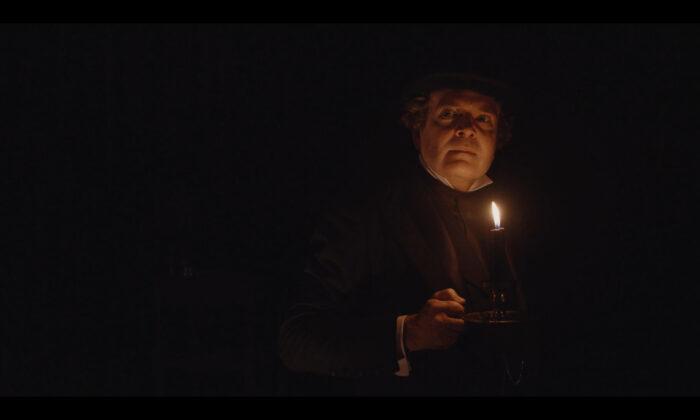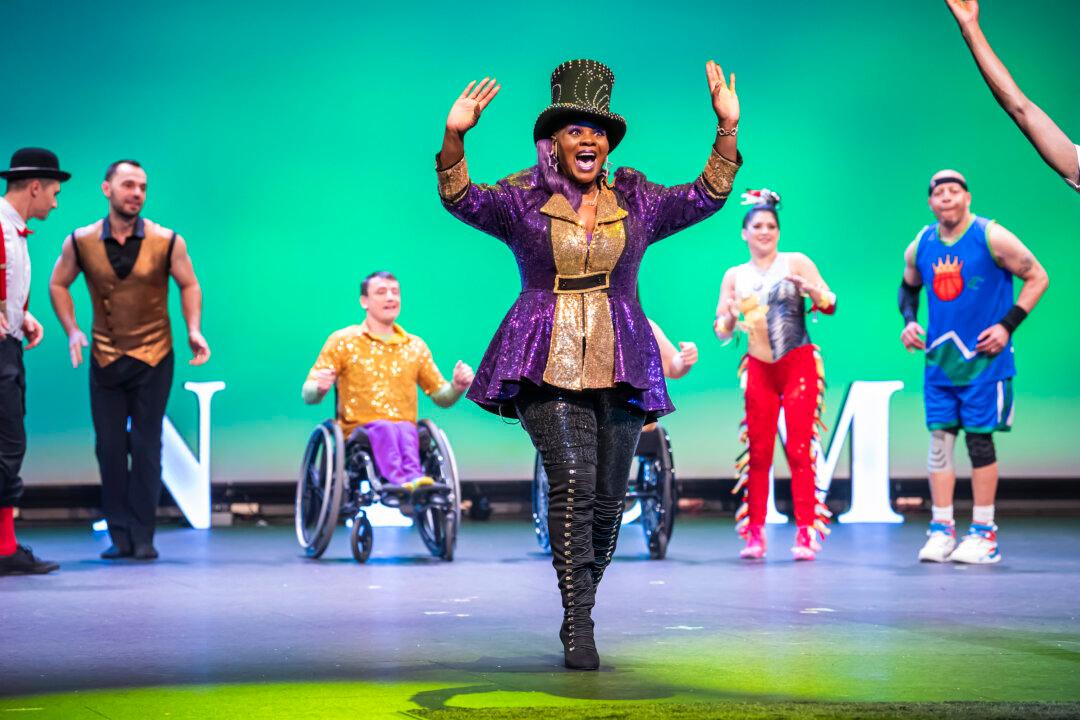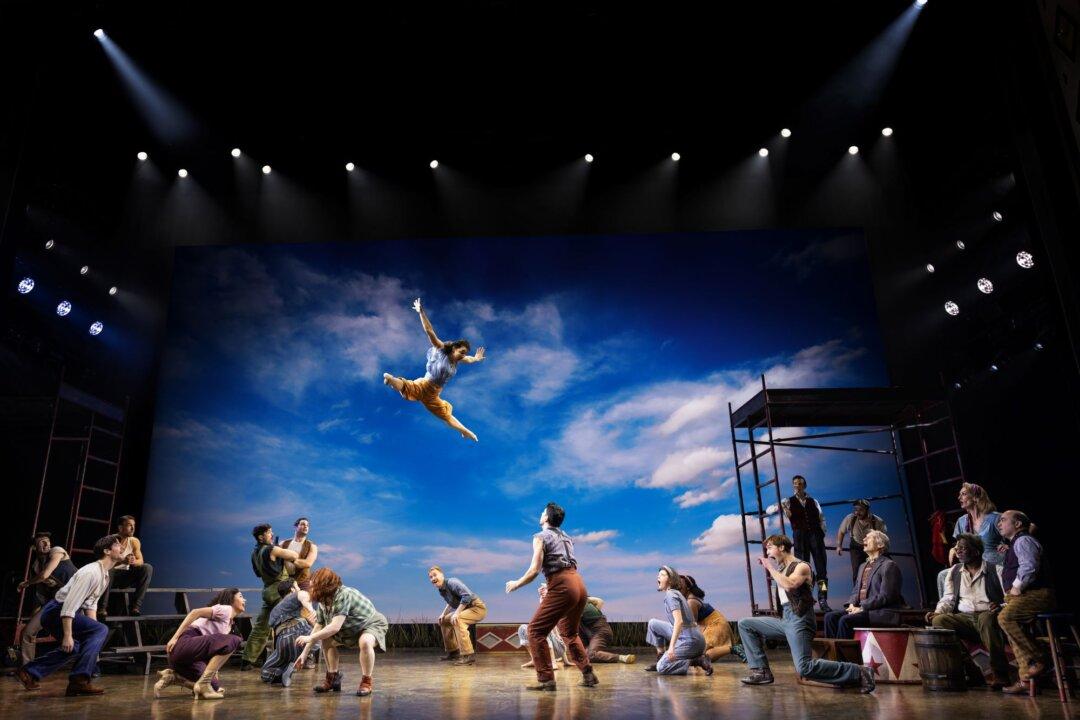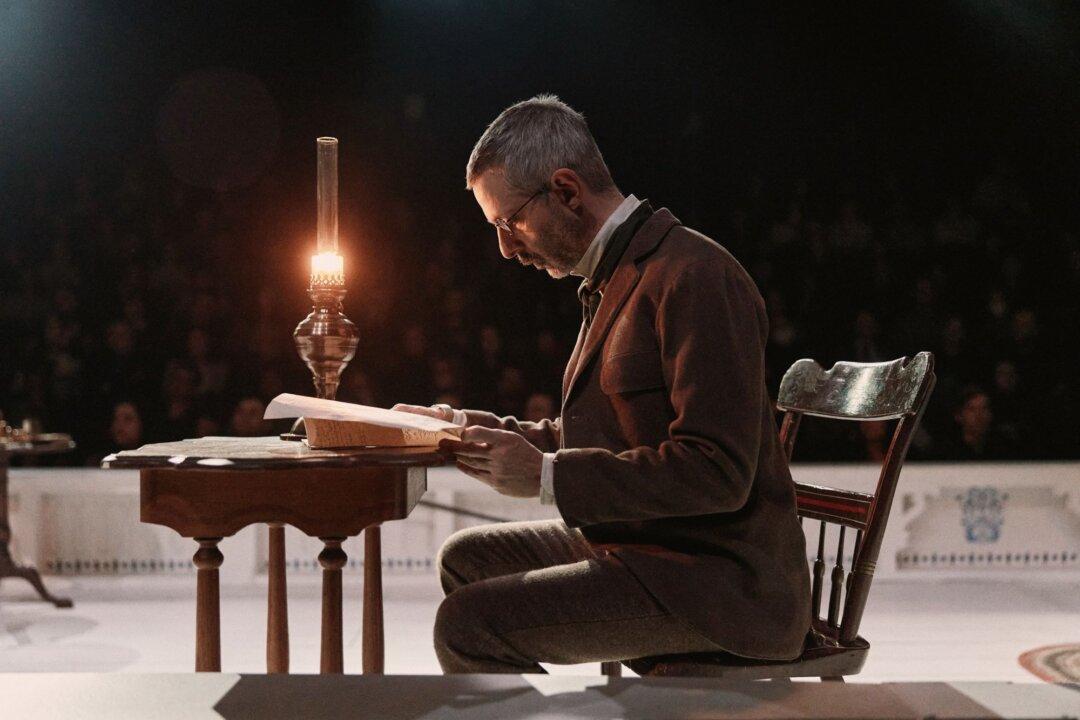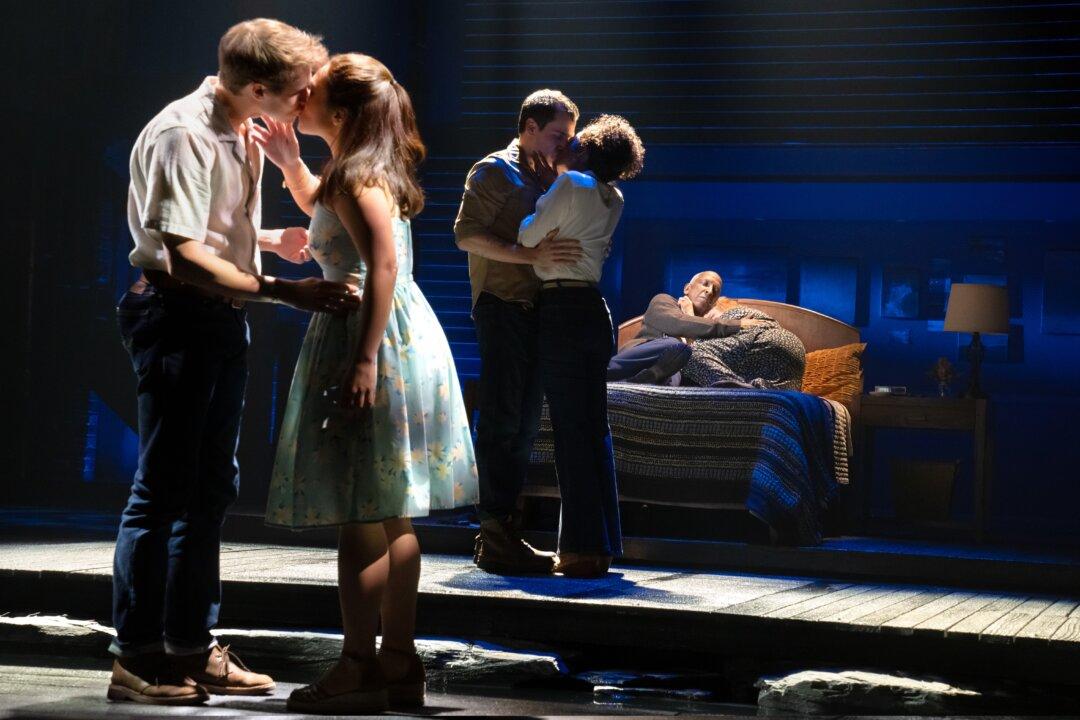There’s a reason Charles Dickens’s novella “A Christmas Carol” has never been out of print since it first appeared in 1843. Elements of holiday magic, the supernatural, and social commentary all combine to tell the story of the miserly Ebenezer Scrooge—quite possibly the most miserable man in all of London. Until, on the evening of December 24, he is visited by the ghost of his former partner, Jacob Marley, as well the spirits of Christmas Past, Christmas Present and Christmas Yet to Come. These otherworldly beings force Scrooge to examine the way he has lived his life; they also offer him a chance of redemption. If only he can be convinced to change his ways.
In New York City
The first, and far more somber of the two, is “Charles Dickens’ A Christmas Carol.” Filmed on Oct. 28 of this year on the stage of New York City’s United Palace, it stars Jefferson Mays in what is basically a one-person show.The actor gives a tour-de-force performance as he assumes over 50 different characters, including Mr. Scrooge, his clerk, nephew, long-lost love, various spectral visitors, and an “indignant potato” at a Christmas dinner. Each characterization (and accompanying vocal inflection) fits perfectly into the story’s narrative.
Most important of all, however, is the passion Mays imbues as the tale’s narrator. His words are filled with energy and emotion, causing the viewer to be swept up in the story almost from the moment it starts.
Especially fascinating is the sense of wonder Scrooge feels when he first finds himself journeying into the past. His descriptions of the event are punctuated by appearances of those who attended. A scene where Scrooge happily observes a Christmas party from his youth is particularly effective. Though as the story progresses, his initial delight at seeing long-faded memories come to life is tempered with the bitter realization of how much he has lost.
It also delivers more than a few unexpected moments of surprise. As when Scrooge suddenly spies Marley’s face peering at him from a door knocker. Another riveting sequence occurs during an atmospheric confrontation in a graveyard where Scrooge comes face to face with his final fate.
A scene where the family of Scrooge’s clerk Bob Cratchit prepares for a Christmas dinner drags a bit in the beginning, but quickly becomes one of the most poignant scenes of all. As they make the most of their meager meal, the Cratchits make a valiant effort to forget their desperate straits, financial or otherwise. Each puts on a brave face as they talk about the love they have for one another, while giving thanks for what they do have.
The adaptation by Mays, Susan Lyons and the show’s director Michael Arden, emphasize the story’s supernatural aspects. And, the excellent technical work when it comes to light, shadow, and sound help to provide a sensory feast for the audience.
Seamlessly blending the mediums of theater and film, this “Christmas Carol” is a deeply enjoyable and profoundly moving holiday treat. The show originally had its world premiere at the Geffen Playhouse in Los Angeles in 2018.
(As a side note, keep watching until the very end of the closing credits.)
In San Francisco
Going an entirely different route is the American Conservatory Theater’s offering of “A Christmas Carol: On Air.” Based in San Francisco, the company presents the work as a live radio play, with an interactive aspect designed to encourage participation from younger audience members.Those streaming the production are offered the chance to be a part of the event via a 48-page downloadable activity book. The activities include coloring in the different ghosts when they appear, the chance to sing along with the characters, and to participate in a special game of “Bingo.” The book also contains a synopsis of the story, some holiday recipes, and list of fun things to do both before and after the program.
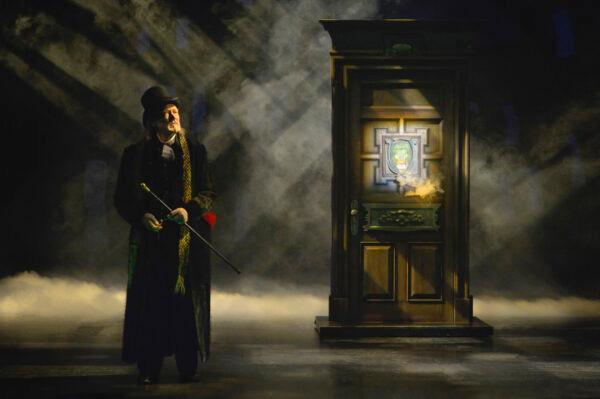
Since the presentation is being offered in a radio format, most of the visuals can only be accessed through the audiences’ imagination. One exception to this is several detailed drawings that appear on device screens used to stream the production. The show opens with the image of a wintry London street, with a sign indicating the offices of Scrooge and Marley and the evening fog rolling in.
While the drawings do change from time to time—one such highlight being a very effective graveyard scene toward the end—it would have been nice to see more of these pictures. I would have enjoyed seeing one of Scrooge’s rooms being transformed by a visit from the Ghost of Christmas Present.
This show really hits the mark when the narration is at its most descriptive. A striking example of this is a sort of verbal montage as the narrator describes how Scrooge and the Ghost of Christmas Present visit various people and places as they journey together. These sites include a mining camp and a ship at sea, and where, despite the sometimes dismal surroundings, a good helping of Christmas cheer is always present.
This kick-starting of the imagination takes place at the very beginning of the production where a group of friends at a Christmas party are induced by their hostess to read aloud from the Dickens’s work. Initially reluctant to do so, any hesitation by the others fades the moment the book is opened and the magic of the story spills out to envelope them all.
Adapted by Carey Perloff and Paul Walsh, the A.C.T. production features additional dialogue and a few extra plot links not found in the original material. These may upset purists, but they do help provide another layer of meaning to what is being presented.
This extra information all shows how certain decisions—or the lack of same—can lead to lasting repercussions. Especially powerful in this regard are the characters “Ignorance” and “Want” in the Ghost of Christmas Present sequence. There’s also an interesting moment where the medical condition of the character of Tiny Tim is discussed.
Each of these strong versions of “A Christmas Carol” bring forth the spirit of the season as well as the story’s ultimate message: that the power to change is in all of us; and perhaps how, if enough of us were able to do just that, it might help to make the world a little bit better for everyone.

